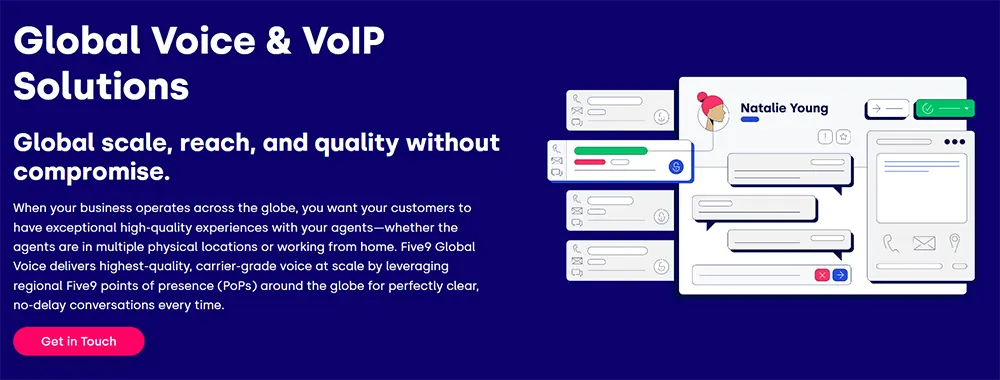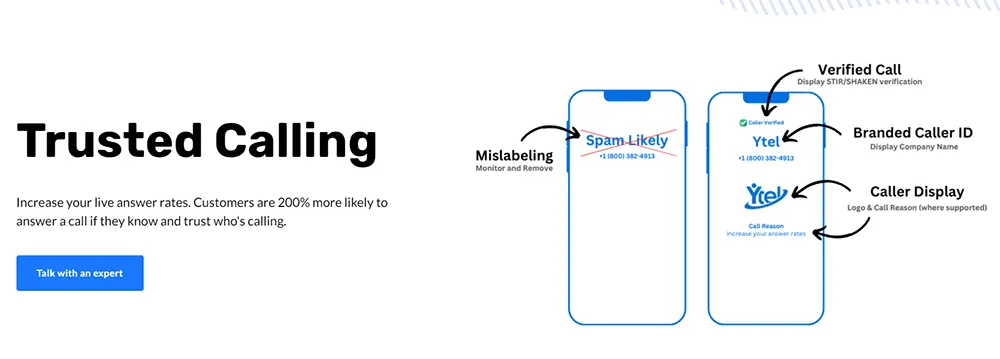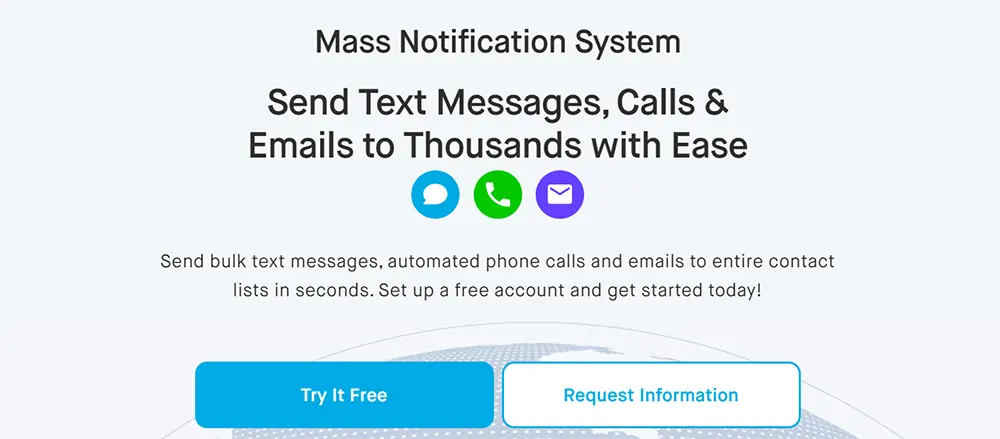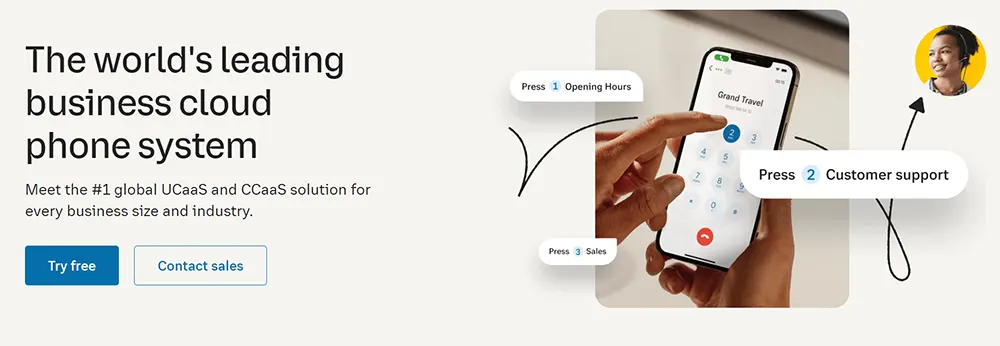Revolutionise Your Outbound Calls - 8 Types of VoIP Diallers Explained
Modern businesses rely a lot on communication for various business functions such as marketing, lead generation, customer engagement, etc. VoIP and its wide-scale adoption have not only given these functions a boost but drastically reduced costs too.
VoIP dialers are an essential component of this technology, providing businesses with a cost-effective and efficient way to make outbound calls. But with so many types of VoIP dialers available, choosing the right one can be overwhelming.
In this article, we'll explore the different types of VoIP dialers and how they can benefit your business. From power dialers to predictive dialers, preview dialers to voice broadcasting dialers, we'll cover everything.
You’ll be able to understand diallers in detail and make an informed decision and optimise your outbound calling strategy.
So let’s jump directly into the different types of VoIP Diallers!
Top 8 Types of VoIP Diallers
VoIP Diallers differ based on how they place calls and what unique features they offer. Here’s a list of the top 8 types of VoIP diallers.
1. Power Dialler
A power dialer is a type of automated outbound calling system used by businesses to increase their call volumes and agent productivity.
It dials a pre-set list of phone numbers and automatically connects the call to an available agent, minimising downtime between calls.
The power dialer operates by dialling a predetermined number of phone numbers simultaneously, based on the number of available agents or the desired call volume.
When a call is connected, it is routed to the next available agent. This automated dialling process reduces the time agents spend manually dialling phone numbers, resulting in higher productivity.
Features Offered
1. Automated call distribution: The system should be able to distribute calls evenly among agents.
2. Intelligent call routing: The dialler should be able to route calls to the most appropriate agent based on various criteria such as skills, availability, and language.
3. Call recording: The ability to record calls can help managers monitor agent performance and provide feedback.
4. Real-time analytics: The system should provide real-time analytics on agent performance and campaign metrics.
5. Customizable caller ID: The option to customise the caller ID can help increase answer rates and improve customer engagement.
Power dialers are ideal for telemarketing, sales, and customer service organisations that require high call volumes and frequent agent connections.
Popular option in the marker - Five9

By maximising agent productivity and reducing downtime between calls, power dialers help businesses increase their sales and improve their customer service.
2. Predictive Dialler
A predictive dialer is a type of outbound calling system used by businesses to automate their calling process, improve agent efficiency and maximise contact with customers.
It uses algorithms to predict when agents will become available, dial a pre-set list of phone numbers, and connect the call to an agent just as they become available, resulting in higher call volumes.
The predictive dialer uses an algorithm that takes into account factors such as call history, call duration, and the number of available agents.
Based on this data, the dialer predicts when an agent will become available and dials the next phone number in the list, ensuring that the call is connected to an agent just as they become available.
Features Offered
1. Predictive algorithms: Advanced algorithms that predict the availability of agents and the number of calls to be made to minimise idle time.
2. Call blending: The ability to switch between inbound and outbound calls seamlessly without manual intervention.
3. Real-time data analysis: The ability to analyse real-time data such as call duration, call status, and agent performance to make necessary adjustments.
4. Customizable scripts: The ability to create customizable scripts for agents to follow during the call to increase efficiency and consistency.
5. Quality control: Features such as call recording and monitoring, call evaluation, and coaching to ensure quality standards are met.
Predictive dialers are ideal for call centres and telemarketing organisations that require a high volume of outbound calls. They help businesses maximise their contact rates, reduce agent downtime, and improve their overall efficiency.
Popular option in the market - VanillaSoft

By utilising predictive dialers, businesses can increase their sales and improve their customer service, while reducing the time and resources required for manual dialling.
3. Preview Dialler
A preview dialer is a type of outbound calling system used by businesses to automate their calling process while providing agents with the opportunity to preview customer information before making a call.
It allows agents to review customer details, such as previous interactions or purchase history, before initiating the call, improving the overall customer experience.
The preview dialer works by providing agents with a preview of the customer’s information before the call is connected.
Once the agent reviews the customer’s details and is ready to proceed with the call, they can initiate the connection by clicking a button.
This process allows agents to prepare for the call and personalise their approach, resulting in a more efficient and effective interaction.
Features Offered
1. Customizable call lists: The ability to create, edit and prioritise lists of contacts to be called.
2. Contact history: Access to a detailed history of previous interactions with each contact, including call notes and recordings.
3. Call scheduling: The ability to schedule calls for a later time and date.
4. Caller ID: The ability to display a specific phone number or name to the recipient.
5. Call transfer: The ability to transfer calls to another agent or department.
Preview dialers are ideal for sales-oriented businesses that require a more personalised approach to their customer interactions.
They are particularly useful for businesses that sell high-value products or services, where building relationships with customers is crucial to success.
Popular option in the market - Dialpad

By utilising preview dialers, businesses can improve their conversion rates, while also providing a more positive customer experience.
4. Progressive Dialler
A progressive dialer is a type of outbound calling system used by businesses to automate their calling process while ensuring that agents are always available to receive calls.
Unlike predictive dialers, which use algorithms to predict when agents will become available, progressive dialers dial a new phone number only when an agent is ready to receive the call.
This ensures that agents are not overwhelmed with calls, resulting in a better customer experience.
The progressive dialer works by dialling a pre-set list of phone numbers and connecting the call to an available agent as soon as they become available.
Once the call is connected, the agent is presented with the customer's information and can proceed with the call. The dialer then dials the next phone number on the list, and the process continues.
Features Offered
1. Adaptive dialling algorithms: The dialler should have algorithms that can adapt to changing call volumes and adjust the dialling rate accordingly.
2. Call blending: The dialler should allow agents to handle both inbound and outbound calls simultaneously.
3. Real-time monitoring and reporting: The dialler should provide real-time monitoring of agents' performance and call metrics, as well as generate reports on call activity and outcomes.
4. Intelligent call routing: The dialler should route calls to the most appropriate agent based on skill set, availability, and other factors.
5. Voicemail drop: The dialler should have the ability to leave pre-recorded voicemail messages for unanswered calls.
Progressive dialers are ideal for businesses that require a high level of control over their calling process while ensuring that agents are not overwhelmed with calls.
They are particularly useful for businesses that offer complex or high-value products or services, where personalised attention is crucial to success.
Popular option on the market - 8x8 Contact Center

By utilising progressive dialers, businesses can improve their efficiency, reduce agent downtime, and provide a better customer experience.
5. Automated Dialler
An automated dialer is a type of outbound calling system used by businesses to automate their calling process and improve efficiency.
It dials a pre-set list of phone numbers and connects calls to available agents or pre-recorded messages, depending on the nature of the call.
This allows businesses to reach a large number of customers quickly, improving the overall effectiveness of their outbound communication efforts.
The automated dialer works by dialling phone numbers automatically and presenting the call to an available agent or playing a pre-recorded message.
Depending on the type of dialer being used, automated dialers can be configured to play messages, detect answering machines, and even transfer calls to other agents or departments.
Features Offered
1. Customizable call dispositions: This feature allows agents to categorise the outcome of each call for better tracking and analysis.
2. Real-time reporting: This feature provides real-time metrics on call progress, agent performance, and campaign performance to help supervisors make data-driven decisions.
3. Dynamic caller ID: This feature enables the dialler to dynamically display a different caller ID for each call, increasing the chances of the call being answered.
4. Call recording: This feature automatically records calls for training, quality assurance, and compliance purposes.
5. Predictive analytics: This feature uses machine learning algorithms to predict the best time to call, the best lead to call, and the best offer to make, based on historical data and real-time insights.
Automated dialers are ideal for businesses that require a high volume of outbound calls, such as telemarketing, appointment scheduling, or debt collection.
They are particularly useful for businesses that need to contact a large number of customers quickly, as they can automate the dialling process and free up agents to focus on more complex tasks.
Popular in the market - Ytel Platform

By utilising automated dialers, businesses can improve their efficiency, reduce wait times for customers, and increase overall productivity.
6. Progressive Preview Dialler
A progressive preview dialer is a type of outbound calling system that combines the features of a progressive and preview dialer. It dials a pre-set list of phone numbers and presents customer information to agents before connecting the call.
This allows agents to preview the customer's information and prepare for the call, improving the overall quality of customer interaction.
The progressive preview dialer works by dialling a pre-set list of phone numbers and presenting the customer's information to an available agent before connecting the call.
This allows agents to preview the customer's information and prepare for the call, improving the overall quality of the interaction. Once the agent is ready, the dialer connects the call, and the agent proceeds with the call.
Features Offered
1. Customizable preview time: This feature allows the agent to adjust the preview time as per their needs before the call is made. It helps in better preparation and ensures that the agent is fully equipped to handle the call.
2. Call blending: This feature allows agents to receive both inbound and outbound calls, ensuring a balanced workload and better time management.
3. Automatic call distribution: This feature ensures that calls are distributed to agents based on their skills and availability. It ensures that each call is handled efficiently by the best-suited agent.
4. Real-time monitoring and reporting: This feature provides real-time monitoring and reporting of agent performance and call centre metrics. It helps managers to track agent performance and make necessary adjustments in real-time to optimise the workflow.
5. CRM integration: This feature allows seamless integration with a customer relationship management (CRM) system to access customer data and history, improving the overall customer experience.
Progressive preview dialers are ideal for businesses that require a high level of control over their calling process while ensuring that agents are fully prepared for each call.
They are particularly useful for businesses that offer complex or high-value products or services, where personalised attention is crucial to success.
Popular on the market - Ameyo

By utilising progressive preview dialers, businesses can improve their efficiency, reduce agent downtime, and provide a better customer experience.
7. Voice Broadcasting Dialler
A voice broadcasting dialer is an outbound calling system used by businesses to deliver pre-recorded voice messages to a large number of recipients at once. It is also known as a robocall.
It is an effective tool for businesses that need to communicate with a large audience quickly, such as for marketing, event notifications, or emergency alerts.
The voice broadcasting dialer works by dialling a pre-set list of phone numbers and delivering a pre-recorded message to each recipient.
The message can be personalised based on the recipient's name, location, or other details, making it feel more personal and engaging.
The system can also detect answering machines and voicemails, leaving a message or scheduling a call back when a recipient is available.
Features Offered
1. Text-to-Speech: The ability to convert written text into speech to create a natural-sounding message.
2. Answering Machine Detection: This feature detects when an answering machine or voicemail picks up the call and plays a pre-recorded message.
3. Customised Caller ID: It allows the user to customise the Caller ID displayed on the receiver's phone, which can increase the chances of the call being answered.
4. Opt-Out Option: This feature allows the receiver to opt-out of receiving further messages, ensuring compliance with regulations.
5. Scheduling: The ability to schedule voice broadcasting campaigns at specific times and dates, ensuring that messages are delivered at the right time to the right audience.
Scheduling capabilities allow businesses to send messages at specific times or to specific groups of recipients, ensuring maximum impact.
Voice broadcasting dialers are ideal for businesses that need to communicate with a large audience quickly and efficiently.
They are particularly useful for businesses that need to deliver time-sensitive information, such as emergency alerts or event notifications.
Popular on the market - DialMyCalls

By utilising voice broadcasting dialers, businesses can improve their outreach efforts, save time and resources, and provide a better overall customer experience.
8. Manual Dialler
A manual dialer is an outbound calling system that requires a human agent to manually dial phone numbers and initiate calls. It is a simple and straightforward system that is often used by small businesses or call centres with low call volumes.
To use a manual dialer, an agent would enter a phone number into the system and initiate the call. Once the call is connected, the agent would speak with the recipient, record notes, and move on to the next call.
One of the unique features of a manual dialer is its flexibility. Since agents are manually entering phone numbers, they can personalise the call by researching and referencing the recipient's information.
Features Offered
1. Call history tracking: It should allow agents to view call history and access call recordings for quality assurance and training purposes.
2. Call scripting: It should allow for customizable call scripts to help agents with call flow and provide a more consistent customer experience.
3. Disposition codes: It should allow agents to quickly and easily select a disposition code to track call outcomes and identify trends.
4. Call recording: It should provide the ability to record calls for quality assurance and training purposes.
5. Do Not Call compliance: It should comply with Do Not Call regulations and provide tools for managing opt-outs and unsubscribes.
This can lead to better engagement and higher conversion rates. Additionally, since there is no automation involved, there is no risk of annoying recipients with automated messages or dropped calls.
However, manual dialers can be time-consuming and inefficient for large call volumes. They also lack advanced features such as call recording, detailed reporting, and scheduling capabilities that other dialers offer.
In conclusion, manual dialers are a basic and reliable option for small businesses or call centres with low call volumes.
Popular on the market - RingCentral

They provide a personal touch and allow for greater flexibility in the calling process, but may not be suitable for large-scale outbound calling operations.
Conclusion
When using VoIP for business communication, you have a lot of dialler types to choose from. The best part is that all diallers are exceptional at the few things they specialise in.
Now you know what each type of dialler does and what makes it unique. All you need now is to understand what your business’s requirements are. Knowing those will enable you to pick an option that best serves your requirements.
I hope this guide was helpful to you in choosing the right dialler for your business. In case you need a capable CPaaS to run the dialler, you know where to find us.
Happy Dialling!























































































































